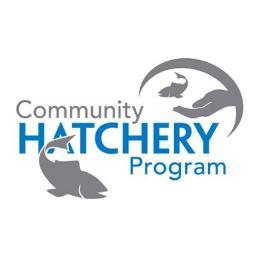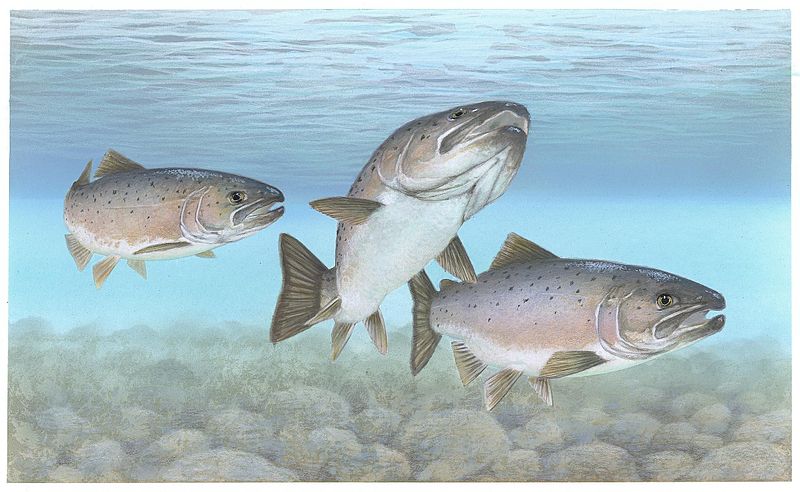Atlantic Salmon
Salmo salarHome » Fish Stocking »
Atlantic Salmon have a typical salmonid body and are generally an overall silvery colour with small black spots, 2-3 larger spots on the gill cover. The back can be brown, green, or blue, depending on the individual. During spawning, the colour changes to a deep bronze, and reddish spots can be seen on the head and body.
Common Names: Bay salmon, black salmon, caplin-scull salmon, Sebago salmon, silver salmon or fiddler.
Habitat of the Atlantic Salmon
Atlantic Salmon live in either oceans or freshwater lakes. The worldwide geographic range of Atlantic Salmon extends from the Arctic Circle to Connecticut and Portugal. Freshwater populations can be found in Ontario, Quebec, Newfoundland and Labrador, Michigan, Vermont and Maine. In the fall they will migrate up rivers to spawn.
Spawning Patterns of the Atlantic Salmon
Atlantic Salmon eggs incubate in gravel nests over the winter and hatch in very early spring. Juvenile Atlantic Salmon stay in the streams for one to three years before migrating to open water, where they spend at least one year maturing into adults.
The Diet of the Atlantic Salmon
Atlantic Salmon most commonly feed on caddis flies, blackflies, mayflies, stone flies and other small invertebrates, but have been known to feed on lake herring, sculpins, and some have even been known to feed on salmon eggs.
Age and Growth Ranges of the Atlantic Salmon
Atlantic Salmon are a iteroparous species (meaning they do not always die after spawning, and may spawn multiple times) which generally live between 4 to 10 years. After 2 years they can measure between 70 – 76 cm long and weigh between 3.6 to 5.4 kg. Record-sized specimens have been measured to a maximum of 153 cm with a weight of 45 kg.
Tips on Fishing for Atlantic Salmon
Openwater
Spoons, in a wide variety of colors, are the most popular baits. Color preferences varies between water body and are usually dominated in local areas by a specific “hot” color that changes throughout the season and is rarely the same as the previous year.
Rivers
Fly fishing with both wet and dry flies has always been the primary method for landing salmon during river runs. The preferred colors for luring salmon are green, orange and yellow, particularly early in the spring. Body materials that are holographic, gold or silver work well with these colours. Whether you tie or buy your flies, consider using flies that incorporate these colours as they have proved efficient at luring salmon.
Atlantic Salmon stocked since 2013
Stocking Statistics
| Year | Stocking Totals |
|---|---|
| 2024 | 5,334 |
| 2023 | 22,719 |
| 2022 | 34,984 |
| 2021 | 31,725 |
| 2020 | 47,931 |
| 2019 | 43,570 |
| 2018 | 52,632 |
| 2017 | 59,491 |
| 2016 | 34,890 |
| 2015 | 71,441 |
| 2014 | 50,970 |
| 2013 | 96,589 |
Matt Burley
Community Hatchery Program Coordinator
Ontario Federation of Anglers and Hunters
PO Box 2800
4601 Guthrie Drive
Peterborough, ON K9J 8L5
Phone: 705-748-6324 Ext. 247
Fax: 705-748-9577
E-mail: matt_burley@ofah.org
Want to volunteer?
Use the map below to locate a hatchery near you (click on the fish icon for hatchery details)
Note: These are just relative locations of each hatchery. To obtain actual locations please contact community hatcheries directly.
If the contact information is incomplete for any hatchery that you would like to contact, please contact the Community Hatchery Program Coordinator.

